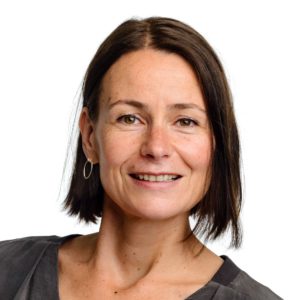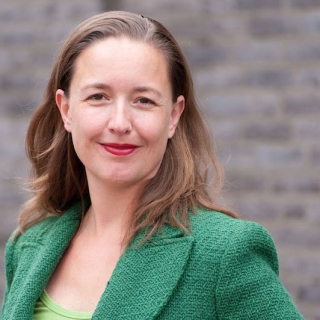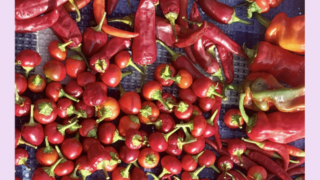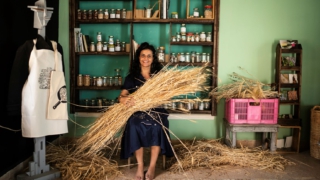Protecting Nature in Palestine – a meeting with Mazin Qumsiyeh
“You want an example of how the occupation of Palestine impacted its ecosystems? I can give you hundreds” Mazin Qumsiyeh connects the local situation to the long history of European colonizing practices around the globe. “When you look at previous colonial situations, such as North America or Australia, those have always been devastating to the environment.”
Professor Mazin Qumsiyeh is a Palestinian scientist and author. He is the founder and director of the Palestine Museum of Natural History and the Palestine Institute for Biodiversity and Sustainability at Bethlehem University where he teaches. He is also a passionate advocate for justice and equality for the Palestinian people.
The Green MENA Network invited him recently to speak about the protection of nature in Palestine. During an online event he gave his audience three examples of the impact of colonization on the Palestinian environment.
Destruction of indigenous trees
The destruction of 530 Palestinian villages in 1948 primarily aimed to remove the local population, but it also led to the uprooting of surrounding trees, including oaks and carobs, as well as domestic trees like olives, figs, and almonds. The eradication of millions of trees altered the landscape significantly. By replacing these indigenous trees – which were well adapted to the climate – with pine trees, Israel transformed the land into a desert. Pine trees, which thrive in wet European climates, devastated the local Palestinian biodiversity. Moreover, they are highly susceptible to fires in a dry climate. And: they do not bear fruit.
Diversion of waters
Another example is the diversion, westwards, of water from the Jordan River basin, including Lake Tiberias. Previously, the river flowed at 1,350 million cubic meters per year, but now it has been reduced to just 20 million cubic meters per year. What remains is essentially a shallow stream that one can jump across. This has had a devastating environmental impact on the Jordan River basin and has also contributed to the shrinking of the Dead Sea.
Draining of wetlands
A third example is the draining of the Hula wetlands in the north during the 1950s. These were a crucial habitat for migrating birds. Palestine serves as a land bridge between Africa and Eurasia, with over 500 million birds migrating through it annually. The draining of these wetlands led to the displacement of local villagers and the extinction of 219 animal species. While the official explanation was that the wetlands were a breeding ground for mosquitoes, Qumsiyeh argues that the real reason was to deny water to the local population. This reasoning also applies to the diversion of waters.
These examples clearly contradict the Israeli narrative that claims ‘We made the desert bloom.’ In reality, Palestine has always been part of what was once the Fertile Crescent and has never been a desert. “Ramallah receives more rainfall than London. However, the indigenous population is denied access to water from local aquifers. This tactic, typical of colonial powers, has also been used in places like North America to force indigenous people to leave.”
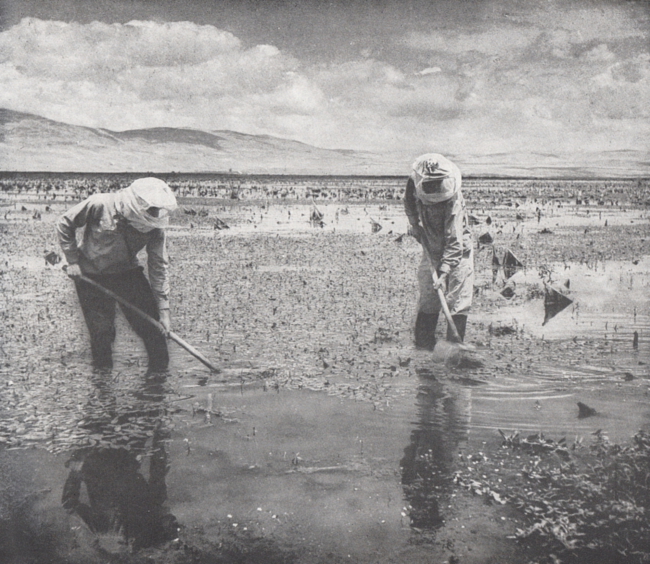
Acceleration
The examples mentioned above illustrate the gradual ecological impacts of settler colonialism. Since the most recent conflict in Gaza began on October 7, 2023, the rate of ecocide has only accelerated. We are witnessing the rapid environmental degradation caused by war and weaponry.
“Israel used depleted uranium and white phosphor in its bombing of South Lebanon and Gaza. We did studies on the environmental impact. We don’t have exact numbers on Gaza now, but certainly the majority of the green covers was destroyed, including agricultural fields and natural areas such as Wadi Ghaza with trees and plants. All of those were bombed or bulldozed into non-existence.”
Prior to October 7, 2023, water diversions had already depleted the Gaza aquifer. The Gaza Strip, densely populated with 2.3 million people, 70% of whom are refugees, faced overuse of its natural resources. Previous bombing campaigns and the imposed blockade caused malfunctions in Gaza’s power plants and a lack of proper sewage facilities. As a result, sewage has been dumped into the sea, adversely affecting marine wildlife in the Mediterranean Sea.
Nature protection as an excuse
Going back to the topic of protection of nature in the area that was historic Palestine: “Our studies, which were conducted together with the international organization IUCN, demonstrated that Israel did not designate ‘Green Areas’ to protect nature, but to exclude the Palestinians. Again, this is not the first time in human history that colonizers use the protection of the environment as a trick to exclude indigenous people. In the United States, for example, the main reason to adopt a resolution on the establishment of Yellowstone Park, was to exclude Indians from the area”. ‘Nature protection’ itself is a narrative used to cover up for land grabbing, or for prohibiting local Palestinian population from access to certain areas”.
Qumsiyeh draws this conclusion about Israel from several lines of evidence: “First, who designates those areas in that state of Israel that are to be green? Is it biologists or environmentalists who possess knowledge about nature? No, it is not even a national entity, it is a supra national entity called the Jewish National Fund, which has as its objective to transform the land into a Jewish country. No environmentalists are involved in the process.
Another line of evidence is to look where the areas were designated, like the Galilea and the Negev, where Palestinians still remained and needed to be excluded. Areas were also designated in the Jordan Valley, so as to form an Eastern flank of the Zionist project. The third line of evidence is what happens to these areas after Palestinians are excluded from them. More than half of the ‘green areas’ became used for industrial or residential settlements, or they became military zones.”
Socio-economic, political, and ecological issues in Palestine are interconnected. Qumsiyeh illustrates this by discussing Bethlehem, the birthplace of Jesus and Qumsiyeh’s home. The Bethlehem area is home to 260,000 Palestinians, including 70,000 refugees from 1948 living in and around three refugee camps. These 260,000 people have access to only 15% of Bethlehem’s land. The remaining 85% is occupied by approximately 250,000 Jewish settlers, roughly equal to the number of Palestinians, including refugees.
“In our district, 30 to 40 Jewish settlements exist, housing a quarter of a million settlers who have their own infrastructure. This includes segregated roads, walls, and checkpoints designed to protect the settlers and separate Palestinians from their land. The wall alone destroyed around two million fruiting trees in the Westbank. All this settler infrastructure negatively impacts wildlife and biodiversity in Palestine.”

Local resistance and international support
When asked what can be done to counter this process, Qumsiyeh refers to South Africa as an example of recent decolonization. He likens local resistance to the immune system of a people. From the first uprising in 1881, Palestinians have resisted the Zionist project. “If it weren’t for resistance, I wouldn’t be speaking to you now. It would be like Australia, with very few indigenous people remaining. Thanks to 140 years of resistance, the Palestinian population now numbers 7.2 million in the historic space of Palestine, proving its success.”
In addition to local resistance, international support is crucial, as it was in ending apartheid in South Africa. The balance of power can shift. “I like the story of a bird counting snowflakes on a tree branch. To its surprise, the 200,000,442nd snowflake causes the branch to break. This is what will happen with global pressure: we will reach a tipping point. Individual snowflakes have an effect. Each of us has a role to play; teaching, writing, and demonstrating can all be forms of resistance. Eventually, the branch will break.”
“It is a joint existential struggle”
In the resistance against occupation, some Israeli Jews also stand up for Palestinian rights. “But we learned that Israeli environmental protection organizations often prioritize Zionist objectives over environmental protection. They consider the colonial system and a ring of settlements around Jerusalem more important than safeguarding the environment.”
“Our allies are those who consistently uphold international human rights and international environmental law. I cannot work with people that do not uphold these values.” Organisations in Israel that do work from these values are Zochrot, Btselem and Rabbis for human rights. Internationally, there are many more organisations to work with.”
There are many things you can do, Qumsiyeh shared a list of 75 ways to act for peace with justice, that includes a wide range of actions from peace education to civil disobedience, from tasting locally and Palestinian grown food to working with progressive political parties.
Qumsiyeh ends his talk on an uplifting note: “Follow your passion for activism and stay human. Embrace the joyful participation in the sorrows of the world because activism is a route to happiness in life. You might just be the snowflake that breaks the branch.”
You can watch the recording of our session with Qumsiyeh on Youtube.
For further reading on the topic, here are some recommendations:
Ripple Effects: Exploring the environmental impact of Israeli settlements’ wastewater discharge – Norwegian Refugee Council, March 2024
Waste Siege, The Life of Infrastructure in Palestine – Sophia Stamatopoulou-Robbins, Stanford University Press, 2019
Settling Nature, The Conservation Regime in Palestine-Israel – Iris Braverman, University of Minnesota Press, 2023
Greenwashing in Palestine/Israel: Settler colonialism and environmental injustice in the age of climate catastrophe – Sage Journals, May 2022
Impact of the Israeli military activities on the environment – Mazin Qumsiyeh, International Journal of Environmental Studies, March 2024
Environmental Impact of the Conflict in Gaza: Preliminary Assessment of Environmental Impacts – UN Environment Programme, June 2024
Share this post via
